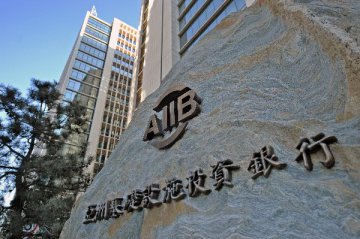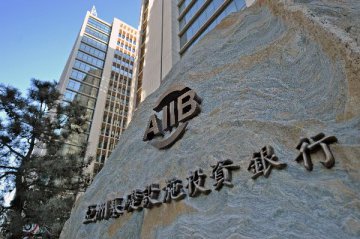
The Board of Governors of the Asian Infrastructure Investment Bank (AIIB) has adopted resolutions approving 13 applicants to join the bank, bringing the bank's total approved membership to 70, AIIB spokesperson Laurel Ostfield announced at the AIIB’s headquarter in Beijing on March 23. This is the first time that the AIIB approvals new membership since its establishment.
Xiao Benhua, vice president of Free Trade Area Research Institute of Shanghai Lixin University of Accounting and Finance, said in an interview with the Securities Daily that the AIIB’s acceptance of 13 new membership makes its total membership only second to that of the World Bank. This will greatly improve the bank’s international influence, help the bank to give financial support to the “Belt and Road” initiative and thus promote China to open up in an all-round way.
It is learnt that the approved new members include five regional members - Afghanistan, Armenia, Fiji, Hong Kong, East Timor, and eight non-regional members - Belgium, Canada, Ethiopia, Hungary, Ireland, Peru, Sudan and Venezuela.
In fact, the relationship between the AIIB and the “Belt and Road” initiative can be described as interdependent. Without financial support from the AIIB, the “Belt and Road” initiative, which focuses on infrastructure construction, cannot advance. Therefore, the inclusion of the 13 new members will not only increase the bank’s capital pool but also enhance the connectivity among its members so as to achieve a win-win situation.
It is noteworthy that in this year's government work report, the “Belt and Road” initiative was mentioned five times. It emphasizes deepening international cooperation in production capacity, promoting China’s equipment, technology, standards, services to go global to achieve complementary advantages. As one of the benchmarks for China’s enterprises in going global, CRRC Corporation Limited has made excellent performance in countries along the “Belt and Road”.
CRRC vice president Yu Weiping told reporters that “we are not satisfied to be the pig in the tail wind; instead we have to be monkeys which can seize the opportunities in the tail wind.” Infrastructure construction is an engine for the “Belt and Road”. It is the locomotive, main force and image ambassador of the “Belt and Road”.
Yu said that CRRC has achieved excellent results in the “Belt and Road” areas in four aspects, including highest growth rate in orders, widest coverage and deepest integration of products, best brand image and best reputation.
In addition, as the countries along the “Belt and Road” plays an important role in grain production in the world, the advancing of the “Belt and Road” initiative accelerates Chinese food enterprises’ pace of going global.
A person in charge of COFCO told the Securities Daily reporter that in recent years, COFCO has been carrying out agricultural trade with 54 countries along the “Belt and Road”, and their agricultural trade maintains a rapid growth momentum. The company also owns a number of strategic resources along the “Belt and Road”, including warehousing and port logistics facilities. Meanwhile, the company also provides engineering design, financial insurance and other services for countries along the “Belt and Road”.
The person told reporters that during the 13th Five-Year Plan period, COFCO will continue to increase investment in construction in countries along the “Belt and Road”. It plans to add 10billion yuan investment. It also plans to operate over 30 million tons of agricultural products each year along the “Belt and Road”, own 10 million tons of first-hand grain each year and import and export 5 billion yuan food by 2020. It will also both inland and maritime food distributional channels, improve the layout of grain storage and logistics and agricultural processing facilities in overseas, enhance all-round exchanges in the region, build an international grain logistics channel that connects central Asia and Europe with China, further control primary grain sources and build itself into an international grain provider to balance the market supply and meet the different needs of consumers.
Translated by Coral Zhong






















Latest comments